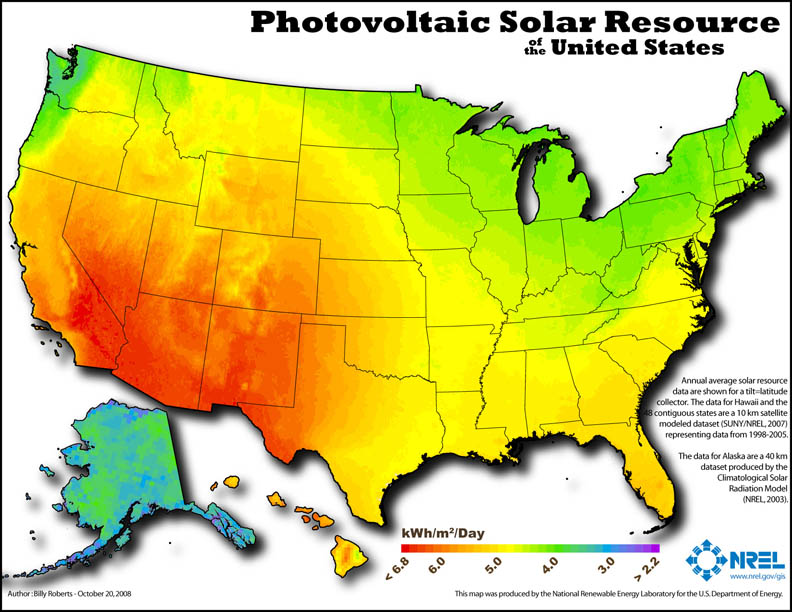forum
library
tutorial
contact

Solar Power Threatening Future
for U.S. Electric Utilities
by Llewellyn King
OilPrice.com, March 17, 2014
|
the film forum library tutorial contact |

|
Solar Power Threatening Future
by Llewellyn King
|
 A persistent warning light is flashing for U.S. electric utilities. The utilities -- big and small, for- and not-for-profit -- are facing serious disruptive technology. The old business models are in danger.
A persistent warning light is flashing for U.S. electric utilities. The utilities -- big and small, for- and not-for-profit -- are facing serious disruptive technology. The old business models are in danger.
The unlikely disruptive technology that is causing the trouble is rooftop solar power.
Back in the energy turbulent 1970s, solar was a gleam in the eye of environmentalists who dared to dream of renewable energy. It looked like a pipe dream.
Very simple solar had been deployed to heat water in desert homes since indoor plumbing became the norm. Making electricity from the sun was many orders of magnitude more complex and it was, anyway, too expensive.
The technology of photovoltaic cells, which make electricity directly from the sun, needed work; it needed research, and it needed mass manufacturing. Hundreds of millions of dollars later in research and subsidies, the cost of solar cells has fallen and continues to go down.
Today, solar certainly is not a pipe dream: It is looking like a mature industry. It is also a big employer in the installation industry. It is a player, a force in the market.
But solar has created a crisis for the utilities.
In order to incubate solar, and to satisfy solar advocates, Congress said that these "qualifying facilities" should be able not only to generate electricity for homes when the sun is shining, but also to sell back the excess to the local utility. This is called "net metering" and it is at the center of the crisis today -- particularly across the Southwest, where solar installations have multiplied and are being added at a feverish rate.
Doyle Beneby, CEO of San Antonio, Texas-based CPS Energy, the largest municipal electric and gas utility in the nation, said, "The homes that are installing solar quickly are the more affluent ones." The problem here, he explained, is that the utility has to maintain the entire infrastructure of wires and poles and buy back electricity generated by solar in these homes at the highest prevailing rate -- often more than power could be bought on the market or generated by the utility.
Steve Mitnik, a utility industry consultant, said that 47 percent of the nation's electric market is residential and the larger, affluent homes -- which use a lot of electricity, and generally pay more as consumption rises -- are a critically important part of it. Yet these are the ones that are turning to solar generation, and expect to make a profit selling excess production to the grid.
But who pays for the grid? According to CPS Energy's Beneby, and others in the industry, the burden of keeping the system up and running then falls on those who can least afford it.
The self-generating homes still need the grid not only to sell back to but,more importantly, to buy from when the sun isn't shining and at night.
For some in the utility industry, net-metering is just the beginning of a series of emerging problems, including:
Environmentalists are as disturbed as the utilities. Some are calling the imposition of a surcharge on rooftop generators, as in Arizona recently, an attempt by the greedy utilities to stamp out competition. But many are seeking alternative solutions without a war over generating, and without punishing those unable to afford their own generation.
Brian Keane, president of SmartPower, a green-marketing group with solar-purchase programs in Arizona and many other states, has looked for cool heads to prevail on both sides of the issue. "I don't have an answer," he said, calling for dialogue. Also the Edison Electric Institute, a trade group, has been talking with the National Resources Defense Council.
It isn't your father's electric utility anymore, or your hippie's solar power.
This article was originally published on OilPrice.com.
learn more on topics covered in the film
see the video
read the script
learn the songs
discussion forum
